Monarch Butterfly Migration Is Simply Magical
Updated: Aug. 03, 2021
Monarch butterfly migration is a long journey. Learn how these amazing butterflies make the trip, where monarchs migrate to and why.
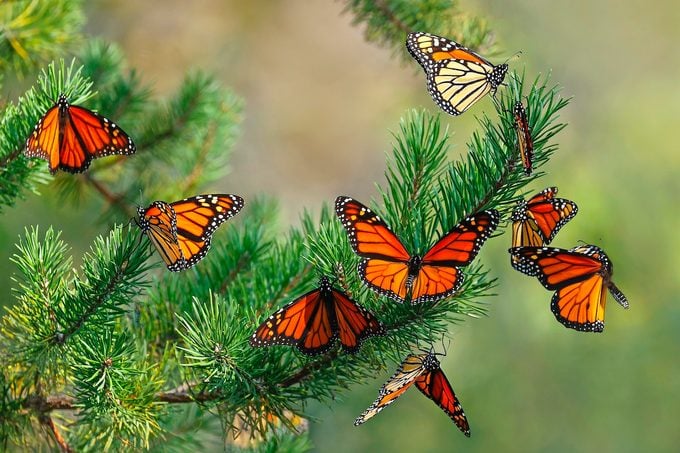
Many butterflies from around the world migrate each year, but no butterfly can match the incredible monarch butterfly migration. In autumn, these orange and black butterflies travel up to 2,000 miles over 2 months. Use this monarch migration map to track the epic journey.
Where Do Monarchs Butterflies Migrate?
Monarch butterflies from east of the Rocky Mountains head to a 30-by-50-mile patch of forest in the mountains of south-central Mexico. Those west of the Rockies winter in southern California. The only exception in the contiguous U.S. is a non-migratory population in southern Florida. There, monarchs continue to breed and produce caterpillars year-round.
But monarchs just don’t flap their wings and head south. With a cruising speed of 12 mph, they would be exhausted after a short journey if they didn’t adequately prepare. In fact, many monarchs arrive in Mexico five times fatter than when they started. So how do they do it? First of all, it’s important to know there are three to six generations of monarchs each year. Only one of those super generations makes the monarch butterfly migration journey.
Discover 7 fascinating monarch butterfly facts.
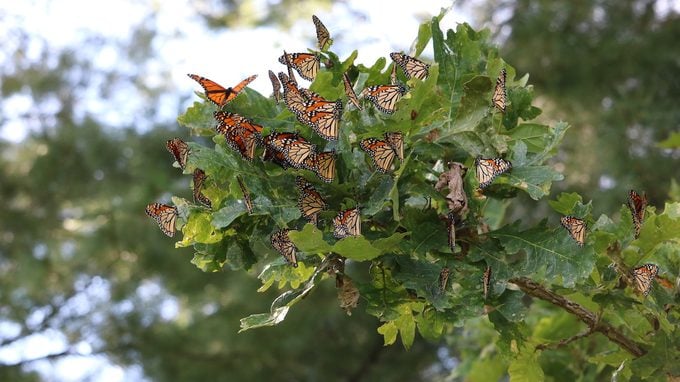
When Do Monarch Butterflies Migrate?
The monarchs that emerge in spring and summer live only 4 to 5 weeks and simply produce the next generation. As autumn approaches, the butterflies sense the temperature change and shortening daylight. This signals the caterpillars that develop in fall to delay maturing into adults, allowing extra time to begin storing large fat reserves for the journey south.
When the newly hatched adult butterflies take flight in fall, they head for warmer areas as quickly as possible, feeding on nectar flowers and storing fat as they go. Streams of fluttering monarchs funnel through the Midwest and eastern states. They fly south by riding on wind and thermal currents, even if it is not a direct route. As they get farther south, they become more selective and ride higher on the thermals to conserve energy. They rest only briefly before their flyways converge in Texas and millions of butterflies make a beeline for the border. Once they reach Texas and the Gulf of Mexico, they begin a more direct route and fly closer to the ground, unless the winds are blowing in the right direction. While traveling across the Gulf, they rest on various structures, such as oil rigs and ships.
Check out the ultimate guide to growing milkweed plants for monarchs.
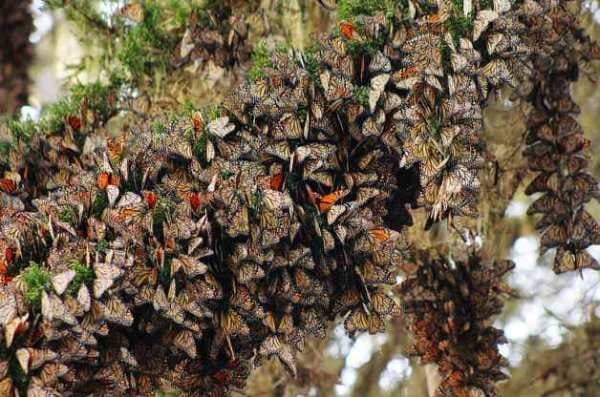
Monarch Butterflies Overwinter in Mexico
When they arrive at their mountainous roosting sites in Mexico and California, the butterflies congregate in huge groups, numbering in the hundreds of thousands. The journey continues south until they reach the high mountain oyamel fir trees in central and southern Mexico. The forest becomes draped in orange and black as the fatigued fliers seek refuge on the trees’ branches for the winter. Monarchs often cover entire groves of trees—dangling from every branch and limb. There, at elevations of 10,000 feet, they remain semi-dormant for the winter.
One of the great mysteries of the monarch butterfly migration journey is that no monarch making the trip has ever traveled the route before. How they know where to go and how to get there continues to baffle the scientific world. Although they may not have understood it, this migratory phenomenon was well known to the regions’ ancient cultures. Monarchs and other butterflies appear on pre-Columbian Meso-American Indian art and embroidery. Yet, the monarchs’ wintering grounds were not discovered by modern scientists until the mid-1970s.
Learn about 3 butterflies that look like monarchs.
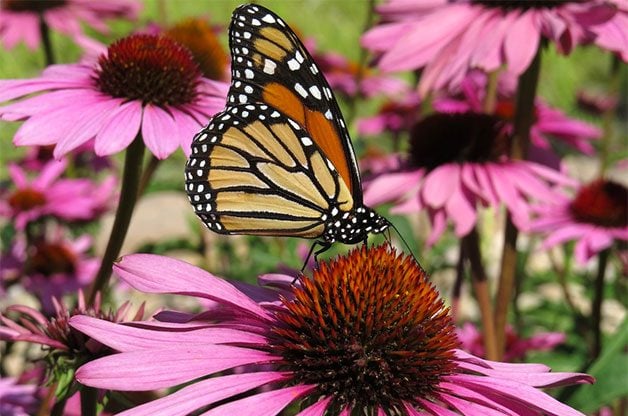
Why Do Monarchs Butterflies Migrate?
Mysterious as it may be, there are several theories about how and why the monarchs migrate. One theory is that the monarch originally was a tropical species that followed its main food source, milkweed, as the plant became more common in the North after the last ice age. Unable to withstand cold winters, the butterfly would head south each winter and return north in spring.
There’s a possible explanation for the location of their concentrated wintering sites as well. While the butterflies can’t withstand freezing temperatures, neither can they remain in warm climates where they would be active and deplete their stored fat reserves. This might also cause them to use up all the available milkweed in an area, since the warm weather could trigger continued mating and egg laying.
Check out 6 common swallowtail butterflies you should know.
Protect Monarch Butterfly Habitat
That’s why the temperate climate in their mountain roosting sites high in the Sierra Nevada range is perfect for them. The butterflies can remain semi-dormant for winter, living off their fat stores. Although the monarchs do not feed during hibernation, they do require moisture, which they get in the high-elevation coniferous forests. Due to the concentrated roosting sites, when local people began harvesting forest trees for timber, it placed the wintering monarchs in grave danger. Even removing a few trees changes the forest’s critical temperature—making the nights frostier and the days warmer, which altered the environment the butterflies needed to hibernate.
A cry for help came from conservationists around the world and forced the Mexican government to take action. News quickly spread of the monarch’s plight. Unfortunately, this attracted droves of visitors to the area, and thousands of butterflies that fell from the trees were trampled. In recent years however, the Mexican government has taken steps to protect the monarch’s wintering grounds. In 1986, the country established a preserve to protect the area. And slowly but surely, tourism and guided walks during monarch butterfly migration season are replacing the need to harvest timber as a means of supporting the local economy.
Spring Monarch Butterfly Migration
As winter ends, when monarchs sense the subtle warmth of spring, the surviving butterflies increase their activity and fly farther and farther from the colony until they begin to return north. They then mate and lay their eggs along the route. This generation—the same one that flew nearly 3,000 miles the previous fall—makes it as far north as Texas. The next generations complete the migration journey back to their original summer range.
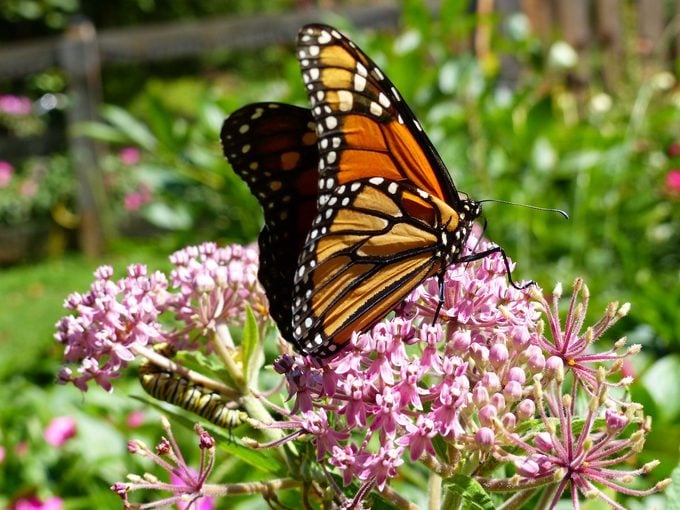
How to Help Migrating Monarchs
Restoring monarch-friendly spaces can be as grassroots as simply planting milkweed. Each new generation deposits eggs on milkweed before dying off as they continue the northward trek, which is why the need for these plants in the eastern half of the country is so great. It takes four generations of monarchs to complete the annual round-trip flight. Consider this phenomenon: The fourth generation that flies to Mexico in the fall has never been to the oyamel forests where their great-grandparents overwintered, and yet monarchs return to the same trees year after year.
With ongoing preservation efforts and concern, the monarch will have a bright future. Hopefully these beauties will continue to intrigue butterfly enthusiasts for a long time to come.
Next, check out myths and facts about butterfly host plants.